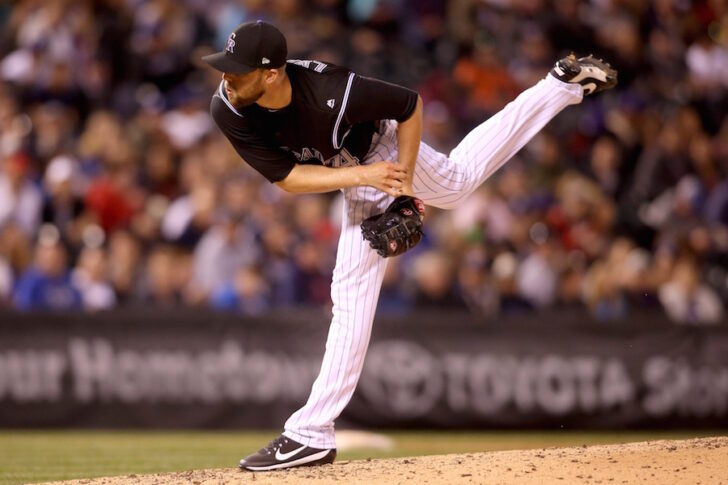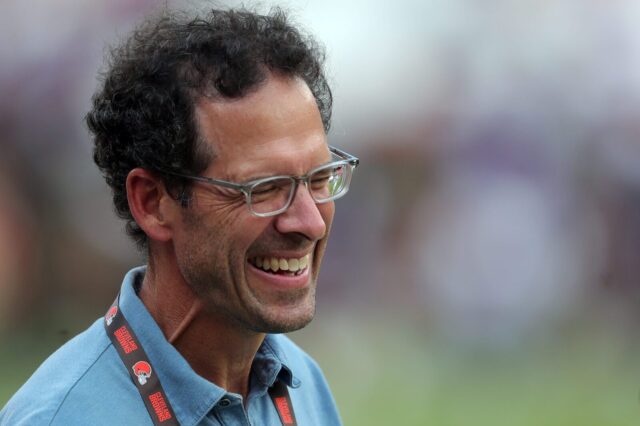The Colorado Rockies are off to their best start in franchise history with a record of 29-17 through 46 games. So far Colorado has been firing on all cylinders; however, in recently, the bullpen has started to show cracks. While they have continued to hold the fort, it may be only a matter of time before things crumble with the current pace some of the arms are on.
While the Rockies have continued to win ballgames, the bullpen will need to get up to speed if the club wants to continue its winning ways. The first month of the season was a soaring success for the Rockies bullpen. Now, with the season fully underway some arms in the ‘pen have come down to earth.
Bud Black has needed to use his bullpen over 152.2 innings so far this year, seventh in the National League and above the league average. Of the five other current division leaders in Major League Baseball, only Milwaukee (164 innings) has used its bullpen more. The two teams chasing Colorado in the NL West, Arizona and Los Angeles, have put considerably less strain on their ‘pens and are getting better cumulative results. The Dodgers boast the NL’s best bullpen ERA at 3.14 over 146.1 innings. The Diamondbacks check in at 3.73 over 135 innings. Colorado’s cumulative bullpen ERA is below-average at 4.13, and it’s buoyed by closer Greg Holland’s 0.96 over 18.2 innings.
Outside of Holland, who has 19 saves in 19 opportunities and has allowed just two earned runs, and long-reliever Chris Rusin to a lesser degree, no arm in the Rockies bullpen has been a sure thing this season. Adam Ottavino and Jake McGee have been mostly reliable, but Chad Qualls, Mike Dunn, Jordan Lyles, and Scott Oberg have all struggled recently.
Between the four, their combined ERA this season sits at a whopping 6.03. If Colorado wants to continue to sit atop the standings, major improvement is needed. Although the bullpen has done a solid job at holding leads in ballgames, things will begin to slip if the trends continue.
Dunn, one of the Rockies prime bullpen acquisitions this past offseason, soared in the first month of the season but has since leveled out. In the last 14 days, opponents are hitting .362 off Dunn – up significantly from his opponents’ batting average of .192 in April.
Oberg is another arm who started the season strong but has since reverted back to form. In the last two weeks, opposing hitters have teed off on Oberg, hitting an alarming .421 in that span. In even more recent time, Oberg has been shelled, surrendering four runs on eight hits in his last six appearances.
The two combined to pitch a scoreless eighth on Monday in what was a three-run game at the time, striking out the side between them, but it was the first time in five combined appearances that they hadn’t allowed at least a hit.
While Oberg and Dunn have seemed to be going through cold streaks of late, other arms have struggled from the get-go.
Qualls has been hit hard all season long, owning an ERA of 5.19. In the 8.2 innings he’s pitched this season, Qualls has been putrid, allowing six runs on eight hits.
Lyles has been the worst of the bunch by far. Used primarily in blowouts, he’s struggled to eat innings when needed. His ERA of 8.53 in just 19 innings pitched is not acceptable for a Major League club, especially one with playoff aspirations.
The Rockies have a lockdown arm in Holland as well as some nice complimentary pieces in Rusin, Ottavino and McGee, but the rest of the bullpen will need to tighten up in order for the club to take the next step. The bullpen has been Colorado’s achilles heel in years past. For the Rockies to reverse their fortune this season and snap their eight-year postseason drought, their relief pitchers will need to step up, take control, and lock things down.



